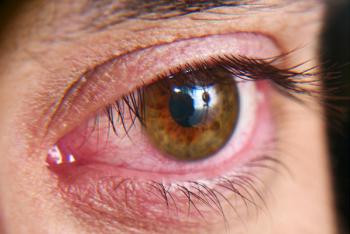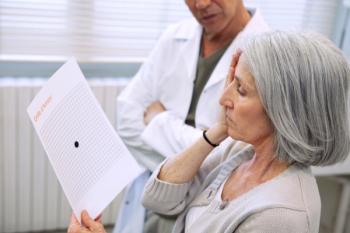
Prevalence and Symptoms of Diabetic Retinopathy
Prevalence of diabetic retinopathy in patients with type 1 and type 2 diabetes along with the most common signs and symptoms.
Transcript
Jose Martinez, MD: About 50% of diabetics are not presently being screened in a timely fashion, so it often goes undiagnosed. This is the big challenge for the healthcare system: to figure out more efficient ways to get patients screened. Presently, they need to make an appointment with an ophthalmologist, which tends to be a barrier to care because it is just another appointment these diabetics have to go to. They’re already seeing many doctors, whether it be for kidney problems or general care, and the last thing they want to do is go see an eye doctor when they’re not having any symptoms.
That’s why what’s starting to become a standard treatment is this idea of screening patients in the primary care doctor’s office or the diabetologist’s office with cameras. That’s becoming the norm. It’s a way to screen diabetics. One takes a picture of the back of their eye. Those pictures are typically read by a retina specialist. In the future, augmented intelligence is going to be reading those as well, so we’re able to screen a lot more patients in a much more patient-friendly manner, so they’re not having to show up to another doctor, having to pay another copay. These things tend to be barriers to care, whereas screening programs in the primary care doctor’s offices are becoming more and more commonplace. In the city I work in, it has become the standard way to screen many diabetics who are not presently being screened with their own general ophthalmologist, or optometrist, whoever their eye care specialist is.
I think in the future, because there’s such an epidemic, there’s such an increase in the number of diabetics, the only way they’re all going to be able to be screened is through these larger screening programs using technology, using cameras in primary care doctors’ offices to screen these patients. Those who have disease then are sent to the eye-care specialist who specializes in managing diabetic eye disease, and that way they’re taking care of those patients. Their clinics aren’t clogged up by screening patients because they’re already being screened. We as the retina surgeons, are able to manage the patients who have disease. Everyone wins in that situation, so I think you’re going to see more and more telemedicine or tele-retinal screening. It goes by several names. It’s a very cost-efficient way to screen patients and prevent them from having vision loss
Typically, we want to see patients before they have any signs and symptoms. If they start developing gradual visual blurring, those who have diabetic macular edema tend to get gradual loss in vision or central vision in one eye or both eyes at a time. Often, patients will present with a sudden onset of floaters, which is a very common symptom. However, for diabetics, there’s always a concern that those floaters are caused by hemorrhaging, or bleeding, in the back of the eye in the vitreous cavity.
Sometimes patients will present with a sudden vision loss due to a large vitreous hemorrhage, which can cause a dramatic drop in vision in a matter of seconds or minutes where patients say, “I saw a shower of floaters and they increased, and then suddenly everything was very hazy” or “I woke up with no vision in my eye.” Or they were doing something outside and they started noticing a bunch of stuff floating in their vision, and it started clouding up. That’s typical. Vitreous hemorrhage will cause these types of symptoms, whereas the diabetic macular edema is a much more gradual loss of vision, of central blurring without associated vitreous hemorrhage.
Some people believe that about 10% of diabetics will lose their vision. Recent studies suggest that that number is increasing because patients are not getting timely care. With the increased number of diabetic patients and the limited access to healthcare, we’re seeing more and more patients treated later in their disease, which is tragic because we have better treatments today than we’ve ever had. For those who get timely care, we can prevent them from losing any vision.
Newsletter
Stay ahead of policy, cost, and value—subscribe to AJMC for expert insights at the intersection of clinical care and health economics.







































